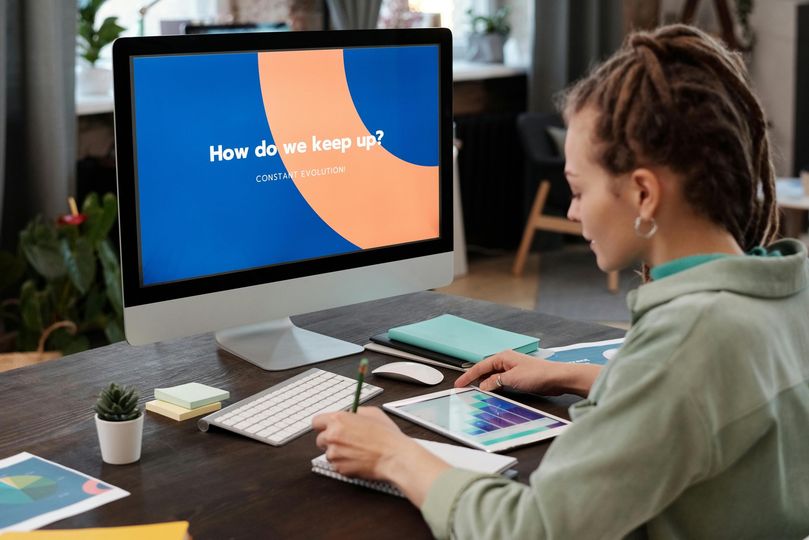Live Exam Success | No.1 Method for Real Time Enhancing Assessment
Introduction
In today’s rapidly evolving educational landscape, the concept of a live exam has gained significant traction. Unlike traditional assessments, a live exam occurs in real-time, offering immediate feedback and insights into a student’s performance. This article delves into the intricacies of live exams, highlighting their importance and impact on educational practices.
Preparing for a Live Exam
Preparing for a live exam requires a strategic approach. Students must review the material thoroughly and practice time management techniques. Effective preparation involves familiarizing oneself with the exam format and anticipating potential challenges.
Advantages of Live Exams
Live exams offer several distinct advantages over conventional assessments. One key benefit is the ability to assess students’ understanding in real time, enabling educators to provide timely interventions and support. Additionally, live exams promote active engagement and discourage academic dishonesty.

Challenges in Live Exams
Despite their benefits, live exams pose unique challenges. Technical issues, such as internet connectivity problems or software glitches, can disrupt the testing experience. Moreover, test anxiety may exacerbate under pressure, affecting students’ performance adversely.
Strategies to Overcome Challenges
To mitigate challenges associated with live exams, students can employ various strategies. Troubleshooting technical issues beforehand and practicing relaxation techniques can alleviate anxiety and enhance performance during the exam.
Best Practices During a Live Exam
During a live exams, adhering to best practices is crucial for success. Reading instructions carefully, managing time effectively, and staying focused are essential strategies to maximize performance and minimize errors.

Technology Used in Live Exams
The implementation of technology plays a pivotal role in facilitating live exams. Proctoring software, equipped with advanced security measures, ensures the integrity and authenticity of the assessment process.
How Live Exams Revolutionize Assessment Methods
Live exams have redefined the assessment landscape, providing educators invaluable insights into students’ comprehension and performance. Unlike traditional exams, which are often conducted in a controlled environment with limited opportunities for feedback, live exams offer a dynamic platform for real-time assessment.
Leveraging Technology for Real-Time Feedback
Central to the success of live exams is the integration of technology. Advanced proctoring software and secure online platforms enable educators to monitor students’ progress in real-time, detect irregularities, and provide immediate feedback. This instantaneous feedback loop enhances the learning process by addressing misconceptions and reinforcing key concepts on the spot.

Personalized Learning Experiences
One of the most significant advantages of live exams is their ability to personalize learning experiences. By leveraging AI-driven analytics, educators can gain deep insights into individual students’ strengths and weaknesses, allowing for targeted interventions and tailored instruction. This personalized approach maximizes students’ academic potential and fosters a supportive learning environment conducive to growth and development.
Addressing Test Anxiety Through Supportive Measures
Test anxiety is a common challenge students face during exams, particularly in high-stakes situations such as live assessments. To alleviate anxiety and promote a positive testing experience, educators can implement various supportive measures, such as providing clear instructions, offering practice sessions, and creating a supportive testing environment. By addressing test-taking’s emotional and psychological aspects, educators can empower students to perform at their best during live exams.
Enhancing Academic Integrity and Security
Maintaining academic integrity and exam security is paramount in live assessments. To safeguard against cheating and ensure the validity of results, educators can employ robust security measures, such as biometric authentication, live monitoring, and plagiarism detection software. By upholding the highest standards of integrity, live exams instill confidence in students and stakeholders, reaffirming the credibility and value of the assessment process.

Empowering Students Through Real-Time Feedback
Real-time feedback is a powerful tool for empowering students and promoting self-directed learning. By receiving immediate insights into their performance, students can identify areas for improvement, set goals, and track their progress over time. This continuous feedback loop fosters a growth mindset. It instills a sense of accountability, motivating students to take ownership of their learning journey and strive for excellence.
Overcoming Technical Challenges in Live Exams
Technical issues can pose significant challenges during live exams, potentially disrupting the testing process and causing undue stress for students and educators. To mitigate these challenges, proactive measures must be taken to address potential technical issues and ensure a seamless testing experience.

Proactive Technical Support
Educational institutions must provide robust technical support infrastructure to promptly address any issues that may arise during live exams. This includes dedicated IT support staff who can troubleshoot technical problems in real time and comprehensive documentation and resources to assist students in resolving common technical issues independently.
Compatibility Testing and System Requirements
Before conducting live exams, it’s essential to conduct thorough compatibility testing to ensure that all systems and software are functioning correctly. This includes verifying that students’ devices meet the minimum system requirements for accessing the exam platform and that any necessary software updates or plugins are installed in advance.
Contingency Plans for Connectivity Issues
Despite thorough preparations, connectivity issues may still occur during live exams, particularly in remote or rural areas with unreliable internet access. To mitigate the impact of connectivity issues, educators should develop contingency plans, such as providing offline alternatives for accessing exam materials or extending exam durations to accommodate lost time due to connectivity disruptions.

Promoting Academic Integrity in Live Exams
Maintaining academic integrity is paramount in exams to ensure the validity and credibility of assessment results. Educators must implement robust measures to prevent cheating and uphold the highest standards of academic honesty throughout the testing process.
Proctoring and Monitoring
Live exams often employ proctoring software to monitor students’ activities and prevent academic dishonesty. These tools utilize various methods, such as webcam monitoring, screen recording, and biometric authentication, to ensure students adhere to exam rules and regulations.
Timed Exams and Randomized Questions
To further deter cheating, live exams may incorporate timed assessments and randomized question sets, making it difficult for students to collaborate or share answers. By imposing strict time limits and presenting questions in a randomized order, educators can minimize the likelihood of cheating and ensure the integrity of exam results.
Plagiarism Detection Software
Plagiarism detection software can be instrumental in identifying instances of academic dishonesty, particularly in assessments that require written responses or essays. By scanning exam submissions for plagiarized content and improper citations, educators can effectively identify and address cheating instances.
Supporting Students through Test Anxiety
Test anxiety can significantly impact students’ performance during exams, affecting their ability to concentrate, recall information, and perform to the best of their abilities. To support students experiencing test anxiety, educators can implement various strategies to promote a calm and focused testing environment.
Mindfulness and Relaxation Techniques
Encouraging students to practice mindfulness and relaxation techniques can help alleviate test anxiety and promote a sense of calmness and clarity. Deep breathing exercises, progressive muscle relaxation, and visualization can help students manage stress and anxiety during live exams.
Positive Affirmations and Self-Talk
Promoting positive affirmations and self-talk can empower students to overcome negative thoughts and beliefs that contribute to test anxiety. Please encourage students to replace self-doubt with affirmations of confidence and competence, reinforcing their faith in their abilities to succeed.
Supportive Testing Environment
Creating a supportive testing environment is essential for minimizing test anxiety and promoting student success. Ensure that exam venues are quiet, comfortable, and free from distractions, allowing students to focus solely on the task.
Empowering Students through Self-Assessment
Self-assessment is a valuable tool for empowering students to take ownership of their learning and monitor their progress over time. By engaging in self-assessment activities, students can identify areas for improvement, set realistic goals, and track their growth and development throughout the academic year.
Reflective Journaling
Encouraging students to maintain a reflective journal can facilitate self-assessment and promote metacognitive awareness. Prompt students to reflect on their strengths and weaknesses, identify effective learning strategies, and set goals for future improvement.
Peer Feedback and Collaboration
Peer feedback and collaboration can enhance self-assessment by giving students alternative perspectives and insights into their performance. Please encourage students to participate in peer review activities, where they can provide constructive feedback to their classmates and receive feedback in return.
Goal Setting and Action Planning
Empower students to set specific, measurable, achievable, relevant, and time-bound (SMART) goals for their academic and personal development. Please encourage students to create action plans outlining their steps to achieve their goals, monitor their progress regularly, and adjust their strategies as needed.
Exploring the Role of Proctoring Software in Live Exams
Proctoring software plays a crucial role in ensuring the integrity and security of exams by monitoring students’ activities and preventing academic dishonesty. This section explores the various features and functionalities of proctoring software and its impact on the assessment process.
Real-Time Monitoring
Proctoring software allows educators to monitor students’ activities in real time during exams, providing insights into their behavior and detecting any irregularities or violations of exam rules. Features such as live webcam feeds, screen recording, and keystroke analysis enable educators to identify potential instances of cheating and intervene accordingly.
AI-Powered Analysis
Many proctoring software solutions leverage artificial intelligence (AI) algorithms to analyze students’ behavior and detect patterns indicative of academic dishonesty. These algorithms can detect suspicious behavior, such as excessive eye movements, frequent glances away from the screen, or irregular typing patterns, alerting educators to potential violations of exam integrity.
Secure Exam Environment
Proctoring software creates a secure exam environment by restricting access to unauthorized resources and preventing students from engaging in prohibited activities during exams. Features such as browser lockdown, screen sharing prevention, and copy-paste restriction ensure that students cannot access external resources or communicate with others during the exam.
Addressing Privacy Concerns in Live Exams
While proctoring software offers numerous benefits regarding exam security and integrity, it also raises privacy and data protection concerns. This section examines the privacy implications of proctoring software. It explores strategies for mitigating privacy risks while ensuring the security of live exams.
Data Encryption and Security Measures
Proctoring software employs robust encryption and security measures to protect students’ privacy and ensure the confidentiality of exam data. Data encryption protocols, secure authentication mechanisms, and strict access controls safeguard sensitive information and prevent unauthorized access or tampering.
Transparent Data Practices
Educators and educational institutions must adopt transparent data practices when implementing proctoring software, providing clear information to students about how their data will be collected, used, and stored during live exams. Transparency regarding data retention policies, data sharing practices, and students’ rights regarding their personal information helps build trust and confidence in the assessment process.
Ethical Use of Biometric Data
Proctoring software that utilizes biometric authentication or biometric data for identity verification must adhere to strict ethical standards to protect students’ privacy and prevent misuse of sensitive information. Educators should ensure that biometric data is collected and used responsibly, with appropriate safeguards to prevent unauthorized access or misuse.
Strategies for Effective Time Management in Live Exams
Effective time management is essential for success in live exams, allowing students to allocate sufficient time to each question or task and complete the exam within the designated timeframe. This section explores strategies for optimizing time management during live exams and maximizing productivity.
Prioritize Questions
Students should begin by reviewing all exam questions and identifying those that require more time or carry higher point values. By prioritizing questions based on difficulty level or point allocation, students can allocate their time more effectively and ensure they address the most challenging or critical items first.
Allocate Time Wisely
Once students have identified priority questions, they should allocate their time strategically, ensuring that they devote sufficient time to each question while allowing for review and revision at the end of the exam. Setting a time limit for each question can help students stay on track and avoid spending too much time on any item.
Use Time-saving Strategies
Students can employ various time-saving strategies during live exams to streamline their workflow and maximize efficiency. Techniques such as skipping difficult questions and returning to them later, using abbreviations and shorthand for written responses, and utilizing keyboard shortcuts for navigating digital exams can help students save valuable time and complete the exam more efficiently.
Leveraging Feedback for Continuous Improvement
Feedback is a valuable tool for promoting continuous improvement and enhancing learning outcomes. This section explores the importance of feedback in live exams and strategies for leveraging feedback to support student growth and development.
Immediate Feedback
One of the key benefits of live exams is the provision of immediate feedback, allowing students to receive real-time insights into their performance and areas for improvement. Educators can capitalize on this feedback by providing constructive criticism, highlighting strengths, and offering suggestions for further study or practice.
Targeted Interventions
Based on the feedback received during live exams, educators can implement targeted interventions to address areas of weakness or misunderstanding. Through additional instruction, supplemental resources, or one-on-one tutoring sessions, targeted interventions can help students overcome challenges and improve their performance.
Encourage Reflection and Goal Setting
Encouraging students to reflect on their performance and set goals for improvement is essential for promoting self-directed learning and fostering a growth mindset. By engaging in reflective practices and setting SMART (specific, measurable, achievable, relevant, and time-bound) goals, students can take ownership of their learning journey and strive for continuous improvement.
Embracing Flexibility in Live Exams
Flexibility is a hallmark of live exams, allowing students to demonstrate their knowledge and skills in diverse ways. This section explores the importance of flexibility in live exams and strategies for accommodating diverse learning styles and preferences.
Varied Assessment Formats
Live exams can incorporate a variety of assessment formats to accommodate different learning styles and preferences. From multiple-choice questions and short-answer responses to essays and practical demonstrations, offering diverse assessment formats allows students to showcase their strengths and abilities in ways that align with their learning styles.
Accommodations for Special Needs
Educators must ensure that live exams are accessible to all students, including those with special needs or disabilities. Accommodations such as extended time, alternative testing formats, and assistive technologies can help level the playing field and ensure all students have an equal opportunity to succeed in live exams.
Promoting Equity and Inclusion in Live Exams
Equity and inclusion are fundamental principles of live exams, ensuring that all students have access to the same opportunities for learning and assessment. This section explores strategies for promoting equity and inclusion in live exams and creating a supportive and inclusive testing environment for all students.
Culturally Responsive Assessment Practices
Live exams should reflect the cultural diversity of students and incorporate culturally responsive assessment practices that recognize and value students’ diverse backgrounds, experiences, and perspectives. This may include using culturally relevant examples and materials, offering alternative assessment formats, and providing opportunities for students to express themselves in ways that resonate with their cultural identities.
Addressing Bias and Stereotypes
Educators must be vigilant in identifying and addressing bias and stereotypes in live exams, ensuring that assessment materials and practices are fair, unbiased, and free from discrimination. This may involve reviewing exam questions for potential bias, training educators on unconscious bias, and soliciting feedback from students on the fairness and inclusivity of assessment practices.
Leveraging Technology for Enhanced Assessment
Technology is pivotal in enhancing the assessment process, providing educators with innovative tools and capabilities to create engaging and effective live exams. This section explores how technology can be leveraged to facilitate live exams and optimize the assessment experience for both educators and students.
Interactive Question Formats
Technology enables educators to create interactive question formats, such as drag-and-drop exercises, multimedia presentations, and simulations that engage students and assess their understanding in dynamic and immersive ways. These interactive question formats promote active learning and critical thinking skills while providing educators valuable insights into students’ comprehension and performance.
Adaptive Assessment Algorithms
Adaptive assessment algorithms use AI and machine learning to tailor exam questions and content to students’ individual learning needs and abilities. By analyzing students’ responses in real-time, adaptive assessment algorithms can dynamically adjust the difficulty level and sequence of questions, ensuring each student receives a personalized and challenging assessment experience.
Enhancing Collaboration and Communication
Live exams provide opportunities for collaboration and communication among students, educators, and other stakeholders, fostering a sense of community and shared learning. This section explores strategies for enhancing cooperation and communication in live exams and leveraging technology to facilitate interactions and engagement.
Collaborative Problem-Solving Activities
Technology-enabled collaborative problem-solving activities, such as virtual group discussions, online forums, and collaborative document editing, enable students to work together to solve complex problems and share their knowledge and insights with their peers. These cooperative activities promote teamwork, communication skills, and critical thinking abilities, preparing students for success in a collaborative and interconnected world.
Real-Time Feedback and Support
Technology facilitates real-time feedback and support during live exams, enabling educators to provide timely guidance, clarification, and assistance to students as they work through exam questions and tasks. Features such as live chat, virtual office hours, and instant messaging platforms allow students to seek help and support from educators and peers whenever they encounter challenges or have questions.
Comparison: Live vs. Traditional Exams
A comparative analysis reveals the distinct advantages of live exams over traditional assessments. While traditional exams offer a sense of familiarity and structure, live exams provide flexibility and real-time feedback, fostering a more dynamic learning environment.
Future Trends in Live Exams
The future of live exams is poised for further innovation and integration of cutting-edge technologies. Artificial intelligence (AI) is expected to enhance exam security and personalize student learning experiences significantly.
Success Stories
Numerous success stories attest to the efficacy of live exams in enhancing learning outcomes and promoting academic integrity. Testimonials from students underscore the transformative impact of real-time assessment on their educational journey.
Conclusion
In conclusion, live exams represent a paradigm shift in education, offering unparalleled insights and opportunities for growth. By embracing the principles of real-time assessment and leveraging technology effectively, educators and students alike can optimize learning outcomes and drive academic excellence. Live exams have emerged as a transformative tool in modern education, offering real-time insights and opportunities for growth. By embracing the principles of real-time assessment and leveraging technology effectively, educators and students can unlock new avenues for academic success.
FAQs
How do live exams differ from traditional assessments?
Live exams differ from traditional assessments in that they are conducted in real-time, often using online platforms, and allow immediate feedback. Unlike traditional assessments, which are typically paper-based and administered at a specific time and location, live exams can be taken remotely and offer dynamic interactions between students and educators.
What are some common challenges encountered during live exams?
Some common challenges encountered during live exams include technical issues such as internet connectivity problems or software malfunctions, test anxiety among students, concerns about academic integrity and cheating, and difficulties in managing time effectively within the constraints of the exam duration.
Can technical issues affect the outcome of a live exam?
Yes, technical issues such as internet connectivity issues, software glitches, or hardware malfunctions can significantly impact the outcome of a live exam. These issues may disrupt the testing process, cause students to lose valuable time, or even prevent them from completing the exam, leading to inaccurate or incomplete assessment results.
How can students prepare effectively for a live exam?
Students can prepare effectively for a live exam by familiarizing themselves with the exam format and requirements, practicing with sample questions or mock exams, managing their time wisely during the exam, and seeking support or clarification from educators as needed. It is also essential for students to maintain a healthy lifestyle, manage stress, and ensure they have a reliable internet connection and a suitable testing environment.
What role does technology play in facilitating live exams?
Technology is crucial in facilitating live exams by providing platforms for exam administration, proctoring software for monitoring students, interactive question formats for engaging assessments, and communication tools for giving feedback and support. Additionally, technology enables educators to analyze exam data, identify trends, and make informed decisions to improve the assessment process continuously.
Are live exams more effective than traditional assessments?
Live exams offer several advantages over traditional assessments, including real-time feedback, personalized learning experiences, and dynamic evaluation of students’ skills and knowledge. However, the effectiveness of live exams depends on various factors, including the assessment’s nature, the technology’s reliability, and the quality of instruction and support provided to students.







